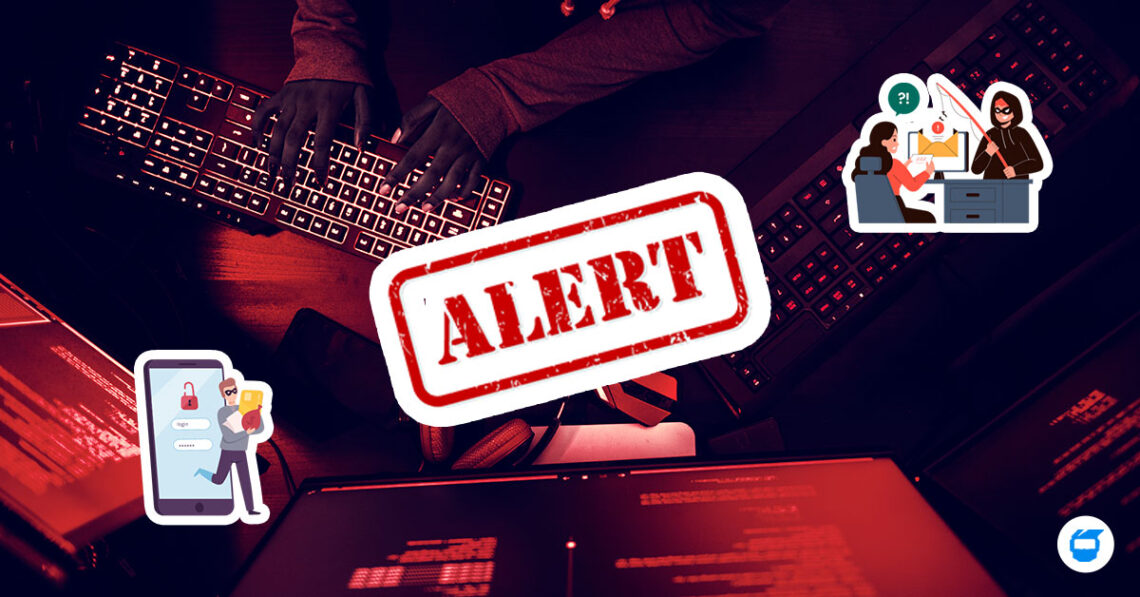As much as technology presents great benefits to people, it still comes with drawbacks that can potentially pose threats. And with the world we live in today, being online is customary as you can pretty much do anything on it, such as do business, connect with people, etc. However, what was initially intended for good and to serve convenience to people is also being turned into a platform for scamming and other online threats.

Hence why it’s essential to be aware of the threats lurking online — and one such threat is phishing, a deceptive practice used by cybercriminals to trick unsuspecting individuals into revealing sensitive information.
In this blog post, we will explore what cyber phishing is, delve into various types of phishing attacks, and provide actionable tips on how to prevent falling victim to them.
Table of Contents
What is Cyber Phishing?
Cyber phishing refers to a malicious technique used by hackers to obtain sensitive information, such as passwords, credit card details, or personal data, by posing as a trustworthy individual or organization. These attackers typically disguise their communications as legitimate messages, using email, text messages, social media, or even phone calls to deceive their victims.
Types of Phishing Attacks
● Email Phishing
This is the most common type of phishing attack, where attackers send fraudulent emails disguised as legitimate organizations or individuals. These emails often contain links to fake websites, urging recipients to provide their personal information.
● Spear Phishing
Spear phishing is a more targeted approach where cybercriminals personalize their attacks by gathering specific information about the target. They may use this information to craft convincing emails that appear to come from someone the target knows or trusts.
● Smishing
Smishing, a combination of SMS (short message service) and phishing, involves sending deceitful text messages to trick users into divulging sensitive information or clicking on malicious URLs.
● Vishing
Vishing, or voice phishing, involves attackers making phone calls and posing as trusted individuals or organizations, aiming to trick victims into revealing their personal information or performing certain actions.
How to Prevent Phishing Attacks
● Be More Cautious With Emails
Carefully examine email addresses, subject lines, and content for any suspicious signs. See to it that you avoid clicking on links or downloading attachments from unknown or untrustworthy sources.
● Make Use of Strong Passwords
Use strong, unique passwords for all online accounts and consider enabling two-factor authentication whenever possible. With a two-authentication, you can double the security as it will not just require one way of authentication; but two different authentication factors to verify whether the person accessing the account is the real owner.
● Educate Yourself
Stay informed about the latest phishing techniques and learn how to identify common red flags in phishing attempts, such as misspellings, poor grammar, and urgent requests for personal information.
● Verify Requests
If you receive a suspicious email or call asking for personal information, independently verify the source by contacting the organization directly through official channels.
● Update Software
Keep your operating system, antivirus software, and web browsers up-to-date to ensure you have the latest security patches and protections against known vulnerabilities.
● Use Reliable Security Tools
Install reputable antivirus software, anti-phishing extensions, and firewalls to provide an additional layer of protection against phishing attacks.
With the threat of phishing attacks continuing to evolve, it’s crucial to be proactive and vigilant in safeguarding your personal information online. By understanding the nature of cyber phishing, being aware of different types of attacks, and implementing preventive measures, you can significantly reduce the risk of falling victim to these malicious schemes. Remember, a cautious and informed approach is your best defense against cyber phishing — as they say, prevention is better than cure. Stay safe and protect yourself from online threats!

